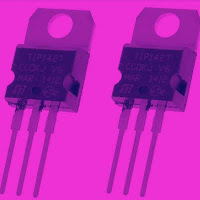Scholars have yet to provide even a rudimentary, let alone comprehensive account of the history of Advaita Vedānta in the centuries leading up to the colonial period, though this history is precisely what set the stage for its modern reception. Scholarship on Advaita Vedānta has tended to focus overwhelmingly on Sańkara, the founding figure of the tradition, but our knowledge of the thousand-year period between the Brahmasütrabhäsya and the lectures of Svāmī Vivekānanda remains largely incomplete.
Introduction to Special Issue: New Directions in the Study of Advaita Vedānta
Michael S. Allen, Anand Venkatkrishnan.
International Journal of Hindu Studies (2017) 21:271-274
The conclusions reached by scholars such as P. Hacker, S. Mayeda (Mayeda 1965a; Mayeda 1965b), among others, identified the works of the historical Sa´ m. kara as limited to commentaries on the Brahma-Sutra ¯ , early Upanis. ads, and the Bhagavad-G¯ıta¯, as well as the independent work Upade´sasahasr ¯ ¯ı. As important as these findings are, they have functioned, at least in the Western academy, as a kind of precedent for what counts as “authentic” Advaita Vedanta. In that way, the mid-twentieth ¯ century Indological concern for philosophically reconstructing early Advaita Vedanta, as well as ¯ the historical biography and authentic works of Sa´ m. kara, brought about a perhaps unintended consequence: later Advaita Vedantic works, particularly texts attributed to ¯ Sa´ m. kara but of later authorship, are all too often judged against the “authenticity” of the Sa´ m. karite commentarial corpus. This judgement, in fact, carries with it the subtle sense that such texts—and their soteriological and hermeneutical modalities—are inauthentic beyond the issue of authorship.
James Madaio
Rethinking Neo-Vedanta: Swami Vivekananda and ¯ the Selective Historiography of Advaita Vedanta
Religions 24 May 2017
This list has been compiled based primarily on the most recent version (15 April 2010) of the online edition of Potter’s Bibliography and on Thangaswami’s Ko´sa. I have supplemented their findings by referring to Mahadevan, Preceptors of Advaita, some of the secondary sources that Potter lists, the texts themselves and the information available in Aufrecht’s Catalogus Catalogorum and Raghavan’s New Catalogus Catalogorum
Christopher Minkowski*
Advaita Vedanta in early modern history
South Asian History and Culture
Vol. 2, No. 2, April 2011, 205–231
What topics attracted the attention of the Advaitins during this period and what literary
genres did they prefer to use to discuss them? To take the latter question first, we should
note, first of all, the appearance in this period of polemical works of a new sort. Polemical
texts as such were nothing new for Advaitins. These were works, however, aggressively
directed not against the proponents of philosophical positions, but rather at critics speaking from within theological movements, especially the movement begun by Madhva.
Another new genre was the analytical survey, a work that assembled and evaluated the
views deemed to lie within the ambit of non-dualist philosophy. Creating doxographies of
all philosophical schools, arranged into a hierarchy with Advaita at the top, had been an
interest of the Advaitins for some time.11 What was new here was the aim comprehensively
to survey the variety within the school, either by itself or in addition to a survey of other
schools of thought. Appayya’s Siddhantale´ ¯ sasam. graha was the most widely known example of the former sort; Madhusudana’s three works, the ¯ Advaitasiddhi, Siddhantabindu ¯ and
Vedantakalpalatik ¯ a¯, all incorporated features of the latter.
The period also saw the appearance of the brief prose pedagogical work, intended
to explain the principles of the Advaitin position in a systematic way at an introductory
level. The two principal texts were Sadananda’s ¯ Vedantas ¯ ara ¯ and Dharmaraj¯ adhvar ¯ ¯ındra’s
Vedantaparibh ¯ as¯. a¯, both of which attracted commentaries throughout the period.1




